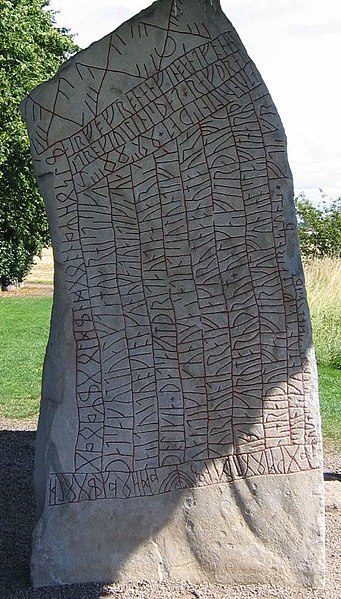In Norse mythology, Nótt is personification of the night. In both the Poetic Edda, compiled in the 13th century from earlier traditional sources, and the Prose Edda, composed in the 13th century, Nótt is listed as the daughter of a figure by the name of Nörvi and is associated with the horse Hrímfaxi, while the Prose Edda features information about Nótt's ancestry, including her three marriages. Nótt's third marriage was to the god Dellingr and this resulted in their son Dagr, the personified day. As a proper noun, the word nótt appears throughout Old Norse literature.
Nótt rides her horse in this 19th-century painting by Peter Nicolai Arbo.
Norse, Nordic, or Scandinavian mythology, is the body of myths belonging to the North Germanic peoples, stemming from Old Norse religion and continuing after the Christianization of Scandinavia, and into the Nordic folklore of the modern period. The northernmost extension of Germanic mythology and stemming from Proto-Germanic folklore, Norse mythology consists of tales of various deities, beings, and heroes derived from numerous sources from both before and after the pagan period, including medieval manuscripts, archaeological representations, and folk tradition. The source texts mention numerous gods such as the thunder-god Thor, the raven-flanked god Odin, the goddess Freyja, and numerous other deities.
The Tjängvide image stone with illustrations from Norse mythology
The god Loki, son of Fárbauti and Laufey
The Rök runestone (Ög 136), located in Rök, Sweden, features a Younger Futhark runic inscription that makes various references to Norse mythology.
Title page of a late manuscript of the Prose Edda written by Snorri Sturluson (13th century), showing the Ancient Norse Gods Odin, Heimdallr, Sleipnir, and other figures from Norse mythology





